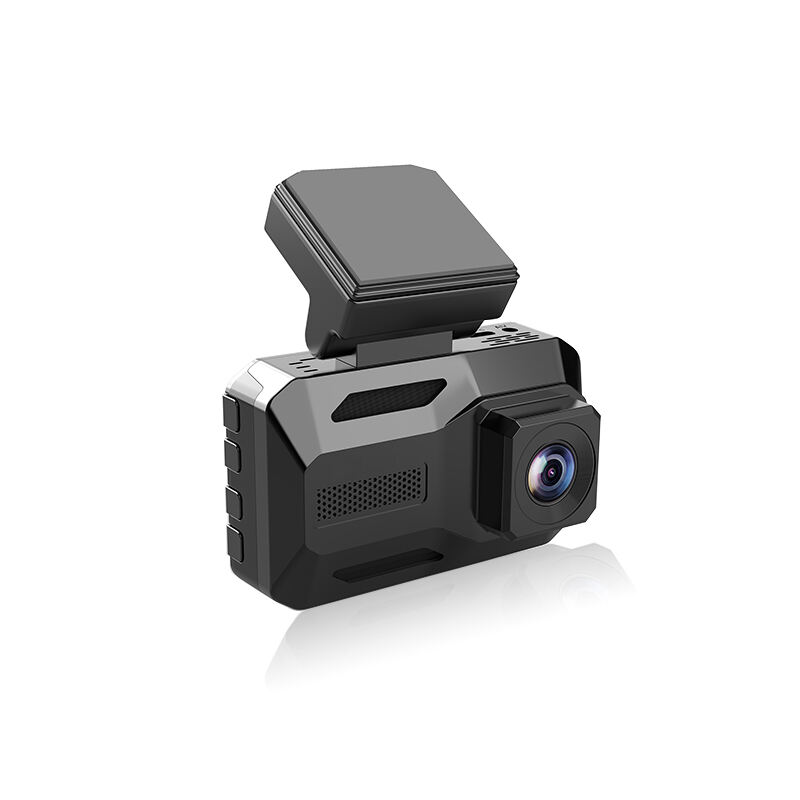Enhancing Fleet Safety with Intelligent Cameras
Persistent Monitoring for Every Mile
Fleets operate across many environments and need tools that deliver consistent oversight across every mile. Ongoing visibility enables managers to spot risky patterns and intervene before incidents occur. This persistent monitoring captures context that manual reports often miss, such as subtle near-miss events, repeated harsh braking in specific locations, or recurring risky behaviors by particular drivers. Managers can correlate these insights with route data and scheduling to reduce exposure. An AI Dash Cam supports these efforts by turning raw footage into actionable trends that drive policy changes and targeted coaching.
Real-Time Alerts that Prevent Incidents
When hazards arise, seconds matter and timely cues can prevent escalation. Immediate alerts improve reaction time and reduce the chance of collisions, especially in busy urban settings. Alerts issued by smart systems help drivers avoid lane drift, tailgating, and sudden pedestrian incursions by providing audible or visual prompts that call attention back to the road. The combination of alerting and recording reinforces safer driving habits and provides evidence that can be used constructively during coaching sessions. An AI Dash Cam’s alerts enable drivers to correct risky maneuvers before they result in costly incidents.
Risk Reduction and Incident Prevention
Proactive Hazard Detection
Modern AI systems analyze visual cues to predict patterns that often precede accidents. These predictive models help drivers avoid near-misses by flagging potential hazards earlier. By recognizing behaviors like abrupt lane changes, encroaching cyclists, or vehicles braking ahead, the system generates warnings that reduce collision likelihood. Over time, pattern recognition allows fleets to identify high-risk routes and time windows and apply preventive measures. Using analytics from an AI Dash Cam, safety teams can prioritize interventions that yield the biggest reductions in incident rates.
Lowering Severity of Collisions
Early warnings can reduce impact speed and severity. By promoting gentler braking or evasive maneuvers, the AI Dash Cam contributes to minimizing repair costs and personal injuries. Even if a collision occurs, lower relative speeds often translate into less structural damage and a better outcome for driver well-being. Fleet insurers appreciate the reduction in severity because it often reduces claim costs and limits premium increases. The net effect is a safer fleet and a healthier bottom line.
Evidence Collection and Claims Management
High-Quality Incident Footage
Clear, timestamped video simplifies knowing what happened and when. High-resolution clips with GPS context are invaluable during investigations and can be the deciding factor in fault determinations. An AI Dash Cam typically locks event clips automatically, preserving the most relevant footage and preventing accidental overwriting. This helps legal and insurance teams rapidly reconstruct incidents without relying solely on subjective accounts.
Contextual Metadata for Faster Resolution
Metadata such as speed, G-force, and alert logs provide crucial context that accelerates claims processing and clarifies responsibility. When video is tied to sensor logs and alerts, insurers can see the sequence of events, which reduces ambiguity and leads to faster settlements. For fleet managers, this data also helps identify avoidable behaviors and trends that require training or route adjustments.

Operational Efficiency and Cost Savings
Reducing Downtime and Repair Costs
Preventing severe incidents keeps vehicles operational, saving on repair and rental costs. This continuity supports service reliability and revenue stability. A smaller number of repairs means less scheduling turmoil and fewer disruptions to delivery windows or client commitments. When an AI Dash Cam helps avoid a single major collision, the savings can quickly justify deployment across many vehicles.
Streamlining Administrative Tasks
Automated reports, searchable clips, and contextual tagging reduce paperwork and free staff to focus on preventive safety work. Rather than manually gathering statements and piecing together timelines, teams can pull precise clips and metadata from the AI Dash Cam system. This speeds up internal investigations and reduces the administrative backlog that often follows incidents.
Driver Coaching and Performance Improvement
Objective Metrics for Fair Evaluations
An objective record of driving events enables fair assessments and targeted coaching. Data-driven feedback replaces anecdotal critiques with measurable examples, such as number of hard braking events per 1,000 miles or instances of speed variance. These objective metrics encourage accountability and make coaching sessions more productive. An AI Dash Cam provides the evidence base managers need to support individual drivers in improving habits.
Positive Reinforcement and Rewards
Recognition programs based on objective performance foster engagement, encouraging drivers to maintain safer habits over time. When good performance is visible and rewarded — via bonuses, recognition, or other incentives — drivers are more likely to internalize safer behaviors. Combining coaching informed by AI Dash Cam insights with positive reinforcement creates a virtuous cycle of improvement.
Insurance and Liability Advantages
Negotiating Better Insurance Terms
Proactive risk management backed by data can strengthen negotiations with insurers. Evidence-based safety programs often translate into premium discounts or favorable policy terms because insurers see a lower prospective risk profile. Presenting aggregated outcomes from AI Dash Cam deployments, such as reduced incident frequency or severity, helps demonstrate a commitment to loss control.
Faster Claims Resolution
When incidents are backed by clear footage and logs, insurers can process claims faster and disputes are resolved sooner. This reduces legal fees and administrative burdens that commonly plague contested cases. Faster resolution also reduces downtime and accelerates vehicle return to service, which is particularly valuable for high-utilization fleets.
Integration, Installation, and Maintenance
Seamless Telematics Integration
Choose solutions that integrate with fleet telematics to centralize data and analytics. Interoperability means safety insights from the AI Dash Cam feed directly into dashboards that managers already use, making it easier to translate alerts into action. Integrated systems allow cross-correlation of vehicle health, route history, and driver profiles with incident data captured by the AI Dash Cam.
Power Management and Durable Hardware
Vehicle-grade hardware and smart power options ensure reliable operation for both driving and parking monitoring. Hardwiring kits or dedicated battery packs maintain power for parking mode without draining vehicle batteries. Ruggedized enclosures and vibration-resistant mounts extend device life, ensuring the AI Dash Cam functions reliably across the fleet’s operational conditions.
Privacy, Compliance, and Driver Acceptance
Balancing Privacy with Safety
Clear policies on access and retention build trust. Technical controls such as encryption, anonymization options, and role-based access protect sensitive recordings while enabling necessary investigations. Configurable retention windows allow fleets to hold footage long enough for evidence without accumulating unnecessary data, helping comply with local regulations.
Engaging Drivers and Building Trust
Involving drivers in policy development and focusing on coaching rather than punishment increases acceptance of monitoring programs. Transparent communication about who can view footage, how it’s used, and the benefits to driver safety fosters cooperation. Driver councils or representative groups can help shape fair use policies and ensure that AI Dash Cam programs are seen as supportive rather than punitive.
Implementation Strategy and ROI
Pilot Programs and Phased Rollouts
Pilots validate settings and demonstrate value before scaling. Starting with a representative sample of vehicles and routes helps refine alert thresholds and retention policies. Pilots also produce baseline metrics against which improvements can be measured. An AI Dash Cam pilot should document both quantitative outcomes and qualitative driver feedback.
Measuring Return on Investment
Track KPIs like incidents per million miles, claim resolution time, and repair costs to quantify benefits and justify investment. By comparing costs before and after deployment — including subscription and maintenance fees — managers can calculate payback periods. Many fleets find that reduced incidents and faster claim handling lead to clear ROI within months or a few years.
Future Trends and Technological Evolution
Edge AI and Smarter On-Device Models
Edge AI reduces latency and preserves privacy by keeping analysis local. Smarter on-device models allow an AI Dash Cam to detect subtle hazards without needing continuous cloud connectivity. As processing power becomes more efficient, models will deliver higher accuracy with lower power consumption, improving overall system responsiveness.
Connected Ecosystems and V2X Potential
Integration with vehicle-to-everything (V2X) infrastructure could extend warnings beyond line-of-sight, improving anticipation of hazards. Imagine an AI Dash Cam that augments onboard perception with alerts broadcast from nearby infrastructure or other vehicles, giving drivers even earlier notification of hazards such as stalled traffic or emergency vehicles.
Practical Tips for Maximizing Value
Maintain Regular Updates and Health Checks
Regular firmware updates and health checks preserve detection accuracy and device reliability across the fleet. Scheduled maintenance — including lens cleaning and mount inspections — reduces false positives and ensures consistent alert performance. Documenting maintenance activity for AI Dash Cam units helps fleet managers spot devices that need service or replacement.
Engage Drivers as Partners
Share performance highlights and coaching opportunities to create a collaborative safety culture. Use anonymized aggregate data to show progress and highlight how individual improvements contribute to fleet-wide safety. When drivers see tangible benefits such as fewer roadside incidents or positive recognition, acceptance of the AI Dash Cam program increases.
FAQ
How does an AI Dash Cam improve fleet safety?
An AI Dash Cam detects risky behaviors, issues immediate alerts, and records contextual footage that supports coaching and incident analysis.
Do AI Dash Cams require continuous internet?
Many AI Dash Cams perform on-device processing; connectivity is optional and used for cloud backup and centralized analytics.
How long should footage be retained?
Retention policies vary by jurisdiction; configure your AI Dash Cam system to meet legal obligations while keeping necessary evidence.
Can AI Dash Cams reduce insurance premiums?
Yes, fleets demonstrating consistent risk reduction and reliable evidence through an AI Dash Cam may be eligible for lower premiums.
Table of Contents
- Enhancing Fleet Safety with Intelligent Cameras
- Risk Reduction and Incident Prevention
- Evidence Collection and Claims Management
- Operational Efficiency and Cost Savings
- Driver Coaching and Performance Improvement
- Insurance and Liability Advantages
- Integration, Installation, and Maintenance
- Privacy, Compliance, and Driver Acceptance
- Implementation Strategy and ROI
- Future Trends and Technological Evolution
- Practical Tips for Maximizing Value
- FAQ



